*** Proof of Product ***
Exploring the Essential Features of “Jerremy Newsome – 4 Strategies That Will Make You a Professional Day Trader”
4 Strategies that Will Make you a Professional Day Trader
Learn how to analyze gaps, breakouts, candle patterns while also discovering where to enter, exit and place stops.
What you’ll learn
- How to pick stocks to daytrade
- What is a gap?
- How to trade the 4 easy gap types
- Where to enter a day trade
- Where to exit a day trade
- Which brokers are best for day trading
- Discover what a professional day trading plan actually looks like
- Which moving averages to use
- Which type of broker orders to use
Course content
2 sections • 9 lectures • 4h 44m total length
Introduction 8 lectures • 4hr 39min
- What is Day Trading
- How to Day Trade the Stock Market
- Which Stocks to Focus on and Why?
- Practice Test 4 questions
This is just so see how strong your memory recall is. - How to Enter
- It’s ALL About RISK – Lose Less Money Than You Make & You Will Be Profitable
Trading the R’s
LEARN HOW TO MITIGATE RISK, IN TRADING.
Thanks so much for reading this. I mention in the video, you having access to a written document, also outlining the information presented in this video. I hope you enjoy it!
As you have likely experienced, every website, stock column, company or ‘trading guru’ will tell you how important risk mitigation is. Consider me to be neither of these four. I am just a guy who loves education and one day decided to combine that love with my zeal for finances, investing and of course the stock market.
First, to define ‘R trading’ – This is a concept that has been around for a few years. I truly can’t track down the originator, but if you know of him/her let me know and I’ll update this portion. All I can say is, it’s an incredibly simple formula and I’m going to do my best to break it down very quickly. The reason I’m creating such a succinct article about R trading is that you will very often hear me refer to it in these Udemy classes.
An ‘R’ simply stands for Risk Unit.
Many people have an intense and visceral connection to money. It’s very hard to break this relationship because money can buy us things. That’s about all it can do. Money is just a tool. Are you in love with the hammer in your garage? Do you treasure it, think about it and constantly try to get more hammers? Money is simply a tool, which can be used to literally build and grow more wealth and security. Therefore, you can either use your hammer or stand in awe of its illusiveness.
In trading there are two facts:
#1 You will lose money on trades
#2 You will be wrong on trades
If you’ve been battling with this issue for years and constantly find yourself trading out of deficits, or blowing out your accounts, and you’re always ‘broke’,hop over to another article. It’s much longer and goes more in-depth into this psychology. For now, I’m just going to explain R trading right now.
R = Risk Unit.
Instead of risking money, or trading money, you are breaking that emotional barrier by giving it a less cool name. It’s no longer money you’re trading, just risk units. Boring, plain old risk units.
Your goal? Risk small, win big. Lose small, win big. Cut your losers and let your winners run. Risk less than your potential reward. You know, all of those nomenclatures. Here’s how to calculate it.
The R you trade should be approximately 2% of your entire account.
If you have a $5,000 account your R = $100.00
If you have a $9,504 account your R = $190.08 (You could round up to $200 or round down to $190 if you wanted to).
If you have a $103,716 account your R = $2,074.32. (Again, you could round to $2,075, $2,100, $2,050, but somewhere in that general range).
Your first question is, “Jerremy, if I have a $5,000 account, you are saying I can only spend $100.00 per trade?”
Nope. That is not what I am saying, but you’re close.
I am simply stating that $100.00 is the amount you should be willing to lose on the trade. That’s your Risk Unit, or your R. The amount of investment, or your ‘position size’, is not as important as most people make it out to be. In my opinion, the more important factor is the potential risk on each trade (i.e. how much you lose if you are wrong). Warren Buffett’s famous quote, “The #1 rule in trading, don’t lose money”.
Your goal is obviously to lose as little as possible. Risk mitigation and defense is your goal, concern and focus. If you prevent yourself from totally destroying your account, you can trade longer. After all, if does require money to trade! (I know. I’ve been called Captain Obvious before.)
How to calculate with shares
R / stop value = amount of shares to trade
A trader wants to enter AAPL and they plan to buy shares as it bounces off of $120 as a support price. They look at the chart and determine $118 to be a good price for a stop. The stop value in this scenario is $2.00, which is the difference between the entry price and the stop location.
Let’s say the above trader has an R of $100.00
R = $100 / $2.00 stop value = 50 shares to trade. The investment would be $120 x 50 shares, or $6,000.00. The risk, however, if that trader is wrong, is only a $100.00 loss.
Same trader. Different stock.
A trader wants to enter FB and they plan to buy shares as it bounces off of $81 as a support price. They look at the chart and determine $80 to be a good price for a stop. The stop value in this scenario is $1.00.
R = $100 / $1.00 stop value = 100 shares to trade. The investment would be $81 x 100 shares, or $8,100.00. The risk, however, if that trader is wrong, is only a $100.00 loss.
Two different stocks, same loss potential. Therefore, if FB goes up and AAPL stops the trader out for a loss, the trader can be right only 50% of the time and still make a profit. If FB bounces from $81 and goes up to $90 and makes 9R on this trade, while only 1R is lost on the AAPL trade, that’s a total of 8R gained. This trader created a plan, followed it, mitigated losses, and made a profit. Boom. That’s smart!
How to calculate when buying call or put options
R / stop value = amount of shares to trade. Then convert that into option contracts.
Many analysts and companies make this more complicated than it needs to be. I will say simply, if you need a rough, quick, down and dirty way to calculate risk on an option trade, this formula works. It’s at least close enough. The reason I say that is because options can change and fluctuate in price regardless of what the stock does. Therefore, it’s nearly impossible to get this formula exact unless you use purely the option price (which you don’t really want to do either), but I’ll show you how.
A trader wants to enter AAPL and they plan to buy shares as it bounces off of $120 as a support price. They look at the chart and determine $118 to be a good price for a stop. The stop value in this scenario is $2.00, which is the difference between the entry price and the stop location.
Let’s say the above trader has an R of $1000.00
R = $1000 / $2.00 stop value = 500 shares to trade. How many contracts control 500 shares? Answer = 5 contracts. Each contract controls 100 shares. Therefore, if a trader bought 5 contracts and had an R of $1,000, this math would give a pretty close approximation of future loss.
Same trader. Different stock.
A trader wants to enter FB and they plan to buy shares as it bounces off of $81.58 as a support price. They look at the chart and determine $79.54 to be a good price for a stop. The stop value in this scenario is $2.04.
R = $1000 / $2.04 stop value = 490 shares to trade. How many contracts control 490 shares? Answer = 4 contracts. Each contract controls 100 shares. What about the other 90? This is where discretion comes in. A trader could easily understand if four contracts were bought, the loss would likely be less than $1,000. If five contracts were bought, the loss could still be slightly less than $1,000, at $1,000 but likely a tad more than $1,000.
Two different stocks, same loss potential. Therefore, if FB goes up and AAPL stops the trader out for a loss, the trader can be right only 50% of the time and still make a profit. If FB bounces from $81.58 and goes up to $90, the trader gains some R’s and loses only 1R on AAPL. Great risk mitigation!
Again, really simplistically, a trader could buy 10 option contracts, which cost $2.40 each. An investment of $2,400.00. If the trader has a $50 R, the stop on the actual option price itself could be $2.35. However, that could easily be the bid / ask spread on the option. Option trading is a tad more advanced and I’m happy to teach you, but that’s for another course at another time.
Thank you so much for reading this information. Let’s keep crushing this Day Trading Course designed for Udemy!
~ Jerremy Alexander Newsome - How to Exit
- Combination of Everything Above
- Creating a Trading Plan for Professional Day Traders
Below is the trading plan we created together in this video:
R = $75
Amount Of Trades Per Day 2 trades max.
Max amount of loss per week is 5R.
Max amount of loss per month 10R.
Strategy and Rules.
My focus will be bullish day trades
Never lose more than 1.2R on any trade
2. I will play the retest gaps
3. I will always wait 30 minutes before I get into a bullish trade, unless, I am buying as a ‘blind buy’ with a limit order, off of the premarket high, which is acting as new support and my stop is comfortably far away
4. After 30 minutes, wait for a hammer, morning start, tweezer bottom or candle stick reversal pattern to go bullish, unless have a limit buy off of an old resistance, new support.
5. Always have a hard stop in the system first
6. Wait for the 5 min candle to close, before you trade (if you’re pulling up the move / stock for the first time)
7. No more than 7 stocks on your watchlist
8. NEVER care about what the stock is doing NOW. Plan for 5-15 minutes from now.
9. If the stock hits one of your targets (100/200 SMA on daily) or a strong resistance price on the daily chart, don’t take the trade.
10. Exit all at 2R (if / when it hits)
11. If you are in a trade, stay in for 30 minutes before you move your stop <Building your paytience muscle>
12. If you are in a trade for more than 2 hours, and you are up more than .5R but less than 1.2R, take your profit and move on [you probably have already moved your stop to lose less than 1R]
Pain (If you break ANY of the rules above, make it painful) No meat for 3 weeks.
Pleasure: Reward yourself if you follow plan.
Suggestion:
The majority of your decisions will be WHY NOT to take the trade. Taking a day trade is REALLY EASY. Rule as many out as possible.
When you place the trade, walk away from the computer for 30 mins (the longer the better)
Your average win will probably be 1.4R and your average loss will be .7R
Keep a journal / excel file of all your trades. - Final Test 10 questions
Trading on the NSE and BSE 1 lecture • 6min
- Gaps and Stocks on the Indian Market
Requirements
- You should know what the stock market
- You should have a basic understanding of technical analysis
Description
When I get asked at a party or something, “so, what do you do?” I reply, I’m a professional Day Trader.
That blank stare and gaze…it’s almost refreshing. Because SO many people have a horrible misconception about day trading. Masses of people think it’s gambling. Huge risks, little rewards that only a math genius or a robot can accomplish.
The great news is, that’s simply not the case. With day trading, it all comes down to risk mitigation, having a simple strategy and world class discipline. Do you consider yourself a determined person? When you begin to learn, do you just throw yourself in 100% and fully immerse yourself in that world? Of course you do! That’s why are you here. That is the type of person you are.
You are here to learn and that excites me, because I LOVE teaching and I’m REALLY good at it. I would argue, I am the best mentor, coach and teacher on Udemy. I am very confident that at the end of this easy to understand course, you will know exactly
- When to get into a day trade
- When to get out of a day trade
- How much to risk on each trade
- How to remove variables in day trading
- What a day trading plan is
- How to create a day trading plan
- How to scan for specific day trades (before they even happen)
- How to analyze gaps
- Which moving averages are the most powerful
- Which timeframes are best to use in day trading
When you finish this one of a kind course, you will be super confident about your day trading approach. You will know exactly why you are getting into a trade and your stress level will be totally gone.
Knowing when to get in, knowing how much to risk, knowing when to get out, knowing which trade to take and how many trades to take…this is the path of becoming a Real Life Professional Day Trader!!
You rock!!
I’m excited to see you in course!
~ Jerremy Alexander Newsome
Who this course is for:
- Anyone who wants to day trade as a professional career.
- Customers who are looking to supplement retirement income.
- Current day traders who are excited about finally becoming profitable.
- Anyone who wants to day trade as a way to generate additional cash flow.
Instructor
Jerremy Newsome
CEO of Real Life Trading. My Mission is To Enrich Lives!
To whom it may concern:
Hi! I hope your day is just marvelous! My name is Jerremy Alexander Newsome. I am the CEO and co-founder of a company called Real Life Trading. The Mission of Real Life Trading is To Enrich Lives and we do that by teaching people how to safely and properly invest in the stock market.
As our society becomes more technologically equipped, day trading and actively trading the markets will become a more viable career choice than ever thought possible. My goal is to teach, guide, coach and mentor traders from around the world and help each individual understand how to extract profits from the market.
I LOVE trading and I love teaching. As I combine both of these passions, I can assure you, the information, impact and takeaway will be life changing for those who take this course. I bring high energy, humor, relevance and a colorful approach to education. I am 100% confident the students in this course will feel properly educated in the wild west of day trading. 🙂
Please see the full list of alternative group-buy courses available here: https://lunacourse.com/shop/

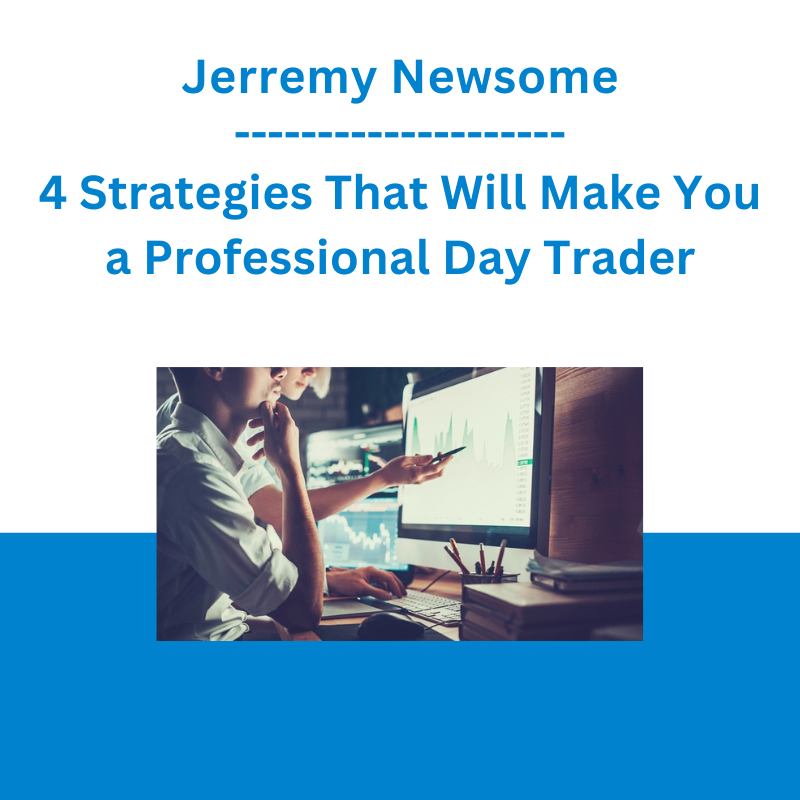
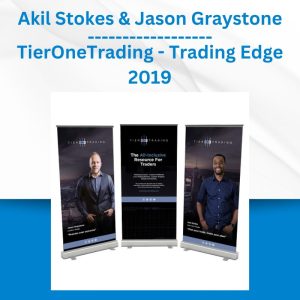


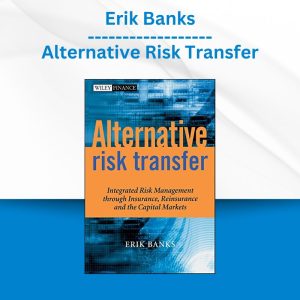
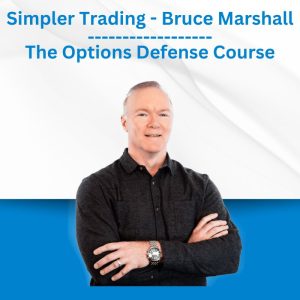

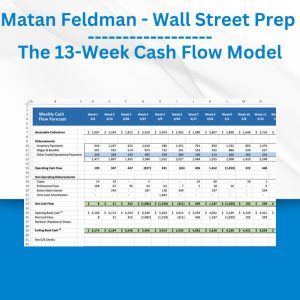
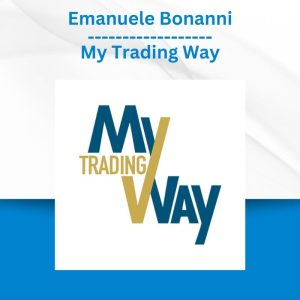
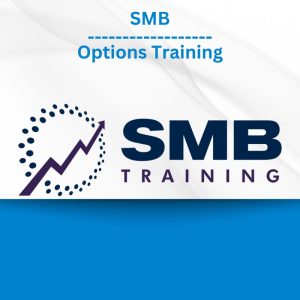 SMB - Options Training
SMB - Options Training  George Fontanills & Tom Gentile - Optionetics 6 DVD Series Home Study Course (Digital Download)
George Fontanills & Tom Gentile - Optionetics 6 DVD Series Home Study Course (Digital Download)  Sovereign Man Confidential - Renunciation Video
Sovereign Man Confidential - Renunciation Video  Dave Landry - Stock Selection Course
Dave Landry - Stock Selection Course  Atlas API Training - API 570 Exam Prep Training Course
Atlas API Training - API 570 Exam Prep Training Course 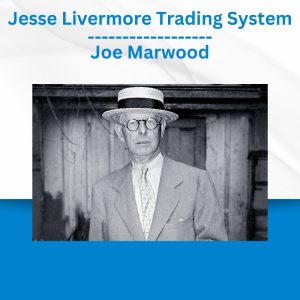 Jesse Livermore Trading System - Joe Marwood
Jesse Livermore Trading System - Joe Marwood  Crypto Dan - The Crypto Investing Blueprint To Financial Freedom By 2025
Crypto Dan - The Crypto Investing Blueprint To Financial Freedom By 2025 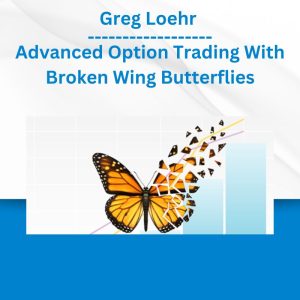 Greg Loehr - Advanced Option Trading With Broken Wing Butterflies
Greg Loehr - Advanced Option Trading With Broken Wing Butterflies  Team NFT Money - Ultimate NFT Playbook
Team NFT Money - Ultimate NFT Playbook  Racing Workshop - Complete Online Package
Racing Workshop - Complete Online Package  George Fontanills & Tom Gentile - Optionetics Wealth Without Worry Course
George Fontanills & Tom Gentile - Optionetics Wealth Without Worry Course 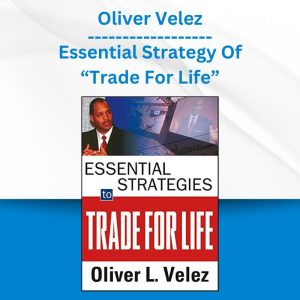 Oliver Velez - Essential Strategy Of Trade For Life
Oliver Velez - Essential Strategy Of Trade For Life  Forexmentor - Recurring Forex Patterns
Forexmentor - Recurring Forex Patterns  Adam Linkenauger - Video Traffic System with OTO
Adam Linkenauger - Video Traffic System with OTO  Julie Stoian & Cathy Olson - Launch Gorgeous - Funnel Gorgeous Bundle
Julie Stoian & Cathy Olson - Launch Gorgeous - Funnel Gorgeous Bundle 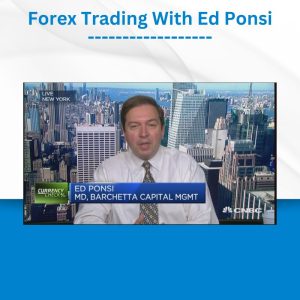 Ed Ponsi - Forex Trading
Ed Ponsi - Forex Trading  The Daily Traders – Exclusive Trading Mentorship Group
The Daily Traders – Exclusive Trading Mentorship Group  Don Gabor - How To Start A Conversation And Make Friends
Don Gabor - How To Start A Conversation And Make Friends  One Light Wonder - Clay Patrick McBride
One Light Wonder - Clay Patrick McBride 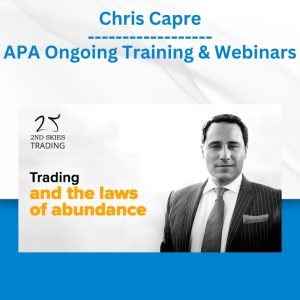 Chris Capre - Advanced Price Action Ongoing Training & Webinars
Chris Capre - Advanced Price Action Ongoing Training & Webinars 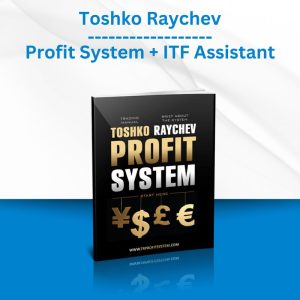 Toshko Raychev - Profit System + ITF Assistant
Toshko Raychev - Profit System + ITF Assistant  Fred Haug - Virtual Wholesaling Simplified
Fred Haug - Virtual Wholesaling Simplified  Craig Koester - Reading Biblical Literature: Genesis to Revelation
Craig Koester - Reading Biblical Literature: Genesis to Revelation  Learn and master guitar - Steven Krenz
Learn and master guitar - Steven Krenz